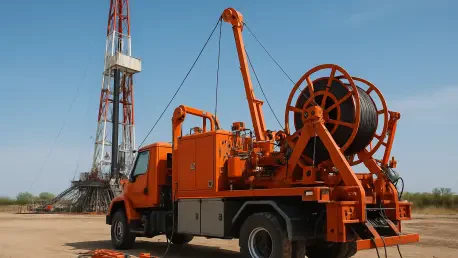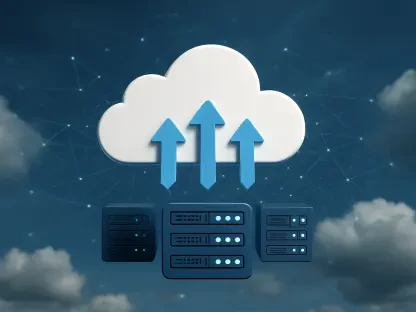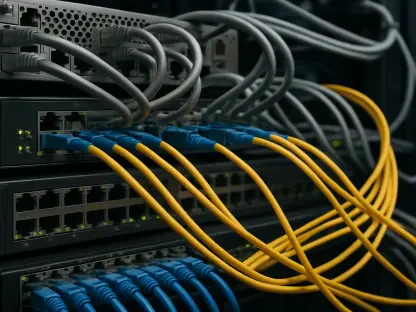Wireline services stand at the forefront of a transformative wave, seamlessly linking the realms of energy exploration and digital connectivity with profound implications for the future. As the world moves toward 2031, this industry is poised to redefine how resources are extracted and how societies stay interconnected in an ever-evolving digital landscape. With a projected market value reaching US$ 28,305.65 million by the end of the decade, growing at a consistent compound annual growth rate of 7.0% from 2025 onward, wireline services are far more than operational tools—they are strategic catalysts for progress. Their dual role in powering oil and gas operations while forming the backbone of modern telecommunications positions them as indispensable to global advancement. This article delves into the multifaceted impact of wireline services, exploring how they will drive efficiency in energy production and enable the connectivity demands of tomorrow through technological innovation and strategic investments.
Pioneering Energy Solutions for a Sustainable Future
Wireline services are set to revolutionize the energy sector by enhancing the precision and efficiency of oil and gas exploration in the years leading to 2031. These technologies, encompassing well logging, completion, and intervention, are critical for accessing untapped offshore basins and revitalizing mature wells across both onshore and offshore environments. Tools such as slickline and electric line facilitate real-time data collection, allowing operators to monitor reservoir conditions with unprecedented accuracy. This capability not only minimizes operational downtime but also maximizes resource output through predictive maintenance and data-driven decision-making. As global demand for energy security intensifies, the integration of artificial intelligence and advanced analytics into wireline operations will likely become standard, transforming traditional methods into digital oilfields that prioritize both productivity and precision in resource management.
Beyond efficiency, sustainability is emerging as a defining factor in the evolution of wireline services within the energy industry. With increasing regulatory pressures and a global push toward environmental responsibility, companies are leveraging these services to optimize production while reducing their ecological footprint. By 2031, the focus on enhanced oil recovery techniques will be complemented by innovations that align with stricter environmental standards, ensuring that energy extraction processes are less invasive and more resource-efficient. This shift reflects a broader industry commitment to balancing growth with stewardship, positioning wireline services as vital enablers of a more sustainable energy landscape. Their ability to support lifecycle well management with minimal environmental impact will be crucial in meeting both economic and ecological goals over the next decade.
Enabling a Connected World Through Digital Infrastructure
In the realm of connectivity, wireline services are proving to be the cornerstone of a digital revolution that will reshape communication by 2031. As the demand for high-speed, reliable networks surges with the rise of smart cities, Internet of Things applications, and edge computing, the deployment of fiber-optic infrastructure becomes paramount. Wireline technologies underpin this expansion, ensuring robust broadband access that connects urban centers and remote regions alike. This infrastructure is essential for supporting everything from industrial automation to connected homes, meeting the escalating needs of a hyper-digital society. The strategic importance of these services lies in their capacity to deliver secure, high-bandwidth solutions that enable seamless integration of emerging technologies, setting the stage for a future where connectivity is ubiquitous and instantaneous.
Government-led initiatives are further amplifying the role of wireline services in building this digital backbone. Programs like the US Broadband Equity, Access, and Deployment initiative are channeling significant investments into infrastructure that supports both oilfield connectivity and urban network development. This dual-purpose funding underscores the versatility of wireline services in addressing diverse connectivity challenges, from enabling remote work to powering smart energy grids. By 2031, their contribution to industrial IoT and remote site connectivity is expected to grow exponentially, driven by sustained public and private investments. This convergence of policy support and technological advancement highlights how wireline services are not just facilitating digital growth but are actively shaping the societal framework of a connected world.
Global Dynamics and Competitive Innovation
The global landscape of wireline services reveals a tapestry of regional dynamics that will influence their impact by 2031. North America continues to dominate with its aggressive exploration activities and rapid adoption of cutting-edge technologies, bolstered by a supportive regulatory environment. Meanwhile, Asia Pacific is emerging as a significant growth hub, fueled by offshore projects and shale gas developments in nations like China and India. The Middle East and Africa are concentrating on deepwater exploration and enhanced recovery strategies to maximize output from existing fields, while Europe focuses on modernizing aging infrastructure through digital transformations. Latin America, though smaller in market share, shows consistent progress with emerging offshore opportunities. This diverse regional spread ensures a balanced yet dynamic evolution of the market, reflecting varied priorities and growth trajectories.
Complementing these regional trends is a competitive landscape driven by innovation and strategic expansion. Industry leaders like Schlumberger and Halliburton are setting benchmarks with integrated digital solutions and real-time well analysis capabilities, pushing the boundaries of operational efficiency. Alongside these giants, regional players such as MB Petroleum Services contribute specialized expertise and expand into emerging markets, adding depth to the industry. Their collective focus on AI-driven analytics and predictive maintenance is fostering a culture of continuous improvement, ensuring that wireline services remain adaptable to both local challenges and global demands. By 2031, this competitive synergy will likely drive further advancements, solidifying the sector’s role as a critical enabler of energy and connectivity solutions worldwide.
Shaping Tomorrow with Strategic Vision
Reflecting on the journey of wireline services, it’s evident that their influence on energy and connectivity has already begun to take root with remarkable momentum. By 2031, their integration of advanced technologies like AI and real-time monitoring will have transformed operational paradigms, ensuring that energy extraction and digital networks are more efficient and sustainable than ever before. The dual impact across oil and gas and telecommunications sectors has positioned them as indispensable to global progress. Moving forward, stakeholders must prioritize continued investment in innovation and infrastructure to sustain this growth trajectory. Emphasizing cross-sector collaboration and regulatory alignment will be key to addressing future challenges, while exploring new applications for wireline technologies can unlock untapped potential. As the world navigates an era of unprecedented demand for resources and connectivity, these services stand ready to lead with strategic foresight and actionable solutions.









